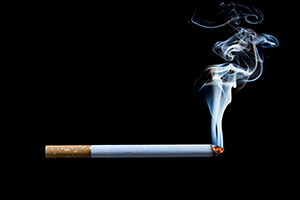You are here: American University College of Arts & Sciences Chemistry Research & Publications
Contact Us
Contact:
Farran, Arij B.
Senior Administrative Assistant
Hall of Science, Room T19 on a map
Chemistry 4400 Massachusetts Avenue NW Washington, DC 20016-8014 United StatesFaculty Research Overviews
Raychelle Burks

The research team of Dr. Burks is focused on the development of colorimetric and luminescent sensor arrays for the detection of analytes of mainly forensic and national security interests with accompanying image and chemometric analysis. Dr. Burks collaborates with colleagues in a variety of fields to provide application-specific sensing systems employing portable, imaging-based detection.
Selected Publications
Azaldegui, C., Aguilar, G., Enriquez, S., Madonna, C., Parish Fisher, C. and Burks, R. (2021), Benzoic acid derivatives as luminescent sublimation dyes in cyanoacrylate fuming of latent fingerprints. J Forensic Sci, 66: 1085-1093.
Durham Brooks T, Burks R, Doyle E, Meysenburg M, Frey T (2021) Digital imaging and vision analysis in science project improves the self-efficacy and skill of undergraduate students in computational work. PLoS ONE 16(5): e0241946.
Michael J. Kangas, Raychelle M. Burks, Jordyn Atwater, Rachel M. Lukowicz, Pat Williams & Andrea E. Holmes (2017) Colorimetric Sensor Arrays for the Detection and Identification of Chemical Weapons and Explosives, Critical Reviews in Analytical Chemistry, 47:2, 138-153.
Stefano Costanzi
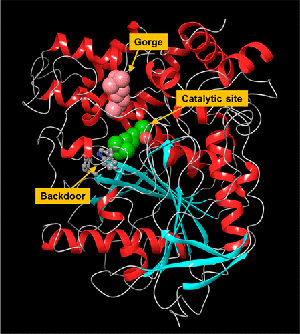
Research Website | Google Scholar
Dr. Costanzi’s current scholarly work is based on two main research lines. The first one focuses on the application of computational chemistry to the study of the interactions between chemicals and living organisms. The second one focuses on the analysis of gaps in current policies and practices that allow chemical weapons proliferation and the conceptualization of ways to narrow them.
Selected Publications
- Influence of the Structural Accuracy of Homology Models on Their Applicability to Docking-Based Virtual Screening: The β Adrenergic Receptor as a Case Study
- Controlling Novichoks After Salisbury: Revising the Chemical Weapons Convention Schedules
- Nerve Agents: What They Are, How They Work, How to Counter Them
Douglas Fox

Dr. Fox develops commercial and industrial products using sustainable materials. Our lab currently investigates new flame retardants, coatings, fiber reinforced plastics, and the health and safety (EHS) of nanomaterials.
Matthew Hartings
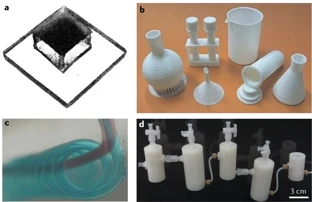
Research Website | Google Scholar
Dr. Hartings has two main laboratory research projects: 1) The use of 3D printing to create chemically reactive objects and 2) The development of novel environmental and biological sensors based off of stimulus-responsive materials. Dr. Hartings is also active in studying and communicating about all of the wonderful chemistry we do at home in our kitchens while we cook.
Monika Konaklieva
Dr. Konaklieva’s main research interest is in the area of using organic synthesis and evaluation towards the generation of new antibacterial, antiviral agents and lipoprotein metabolism modulators. Within this research, the group aims to develop efficient and environmentally friendly synthetic approaches for their preparation. Interdisciplinary projects are a main focus in the Konaklieva’s group, involving organic synthesis/medicinal chemistry, biochemistry, and structure-based drug design.

Santiago Toledo
Research in the Toledo lab focuses on two main themes: a. the synthesis and reactivity of biomimetic models of metalloenzymes with the goal of understanding the role that metalloenzymes play in disease states including cancer development and neurodegenerative diseases; b. the design of bioinspired catalysts to promote challenging oxidative transformations for use on environmentally relevant degradation of organic compounds.

Selected Publications
Toledo, S.; Yan Poon, P.C.; Gleaves, M.; Rees, J. Rogers, D. Kaminsky, W.; Kovacs, J. Increasing Reactivity by Incorporating π-Acceptor Ligands into Coordinatively Unsaturated Thiolate-Ligated Iron(II) Complexes. Inorganica Chimica Acta, 2021, 524,120422.
doi.org/10.1016/j.ica.2021.120422
Blade, G.A. †; Parveen, R.; Jaimes, J.L. †; Ilustre, W. †; Saldaña,D. †; Ivan, D.A. †; Lynch,V.M. Cundari, T.R.; Toledo,S.* A family of structural and functional models for the active site of a unique dioxygenase: Acireductone dioxygenase (ARD). Journal of Inorganic Biochemistry, 2020, 212, 111253.
doi.org/10.1016/j.jinorgbio.2020.111253
Healy, E. F.; Flores, R.†; Lynch, V.M.; Toledo, S.* Protein dynamics of [CuZn]superoxide dismutase (SOD1): How protein motions at the global and local levels impact the reactivity of SOD1. Journal of Inorganic Biochemistry, 2020, 210, 111161.
doi.org/10.1016/j.jinorgbio.2020.111161
Healy, E.; Roth-Rodriguez, A. †; Toledo, S. A model for gain of function in superoxide dismutase. Biochemistry and Biophysics Reports. 2020, 21, 100728.
doi.org/10.1016/j.bbrep.2020.100728
Toledo, S.A.*; Dubas, J.M. A Learner-Centered Grading Method Focuses on Reaching Proficiency with Course Learning Outcomes. Journal of Chemical Education, 2017, 94, 1043-1050.
https://doi.org/10.1021/acs.jchemed.6b00651
Toledo, S.A.*; Dubas, J.M. Encouraging Higher-Order Thinking in General Chemistry by Scaffolding Student Learning Using Marzano's Taxonomy. Journal of Chemical Education, 2016, 93, 64-69.
https://doi.org/10.1021/acs.jchemed.5b00184
Alexander Zestos
Dr. Zestos is a bioanalytical chemist who utilizes electrochemistry and chromatographic methods for bioanalysis. Research from his group focuses on the measuring rapid neurochemical changes of dopamine, serotonin, and other neurotransmitters. His work has vast implications for studying drugs of abuse, obesity, diabetes, depression, and many other diseases and behavioral states.
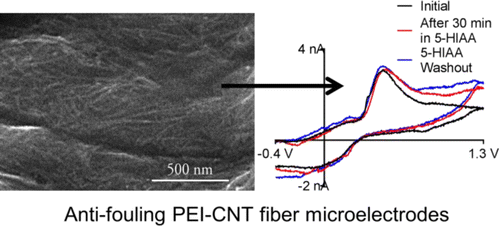
Selected Publications
“An immune-beige adipocyte communication via nicotinic acetylcholine receptor signaling”
“Polyethyleneimine Carbon Nanotube Fiber Microelectrodes For Enhanced Neurotransmitter Detection.”
Shouzhong Zou
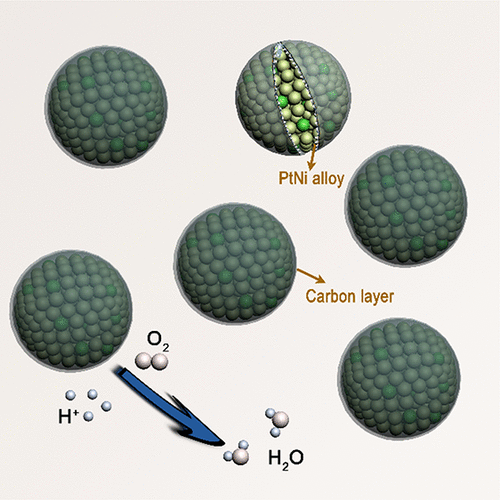
Dr. Zou develops catalysts for hydrogen fuel cells and conversion of carbon dioxide to organic fuels using sustainable materials.
Research News
Recent Grants
Douglas Fox received $36,519 of additional funding from the US Endowment for Forestry & Communities, Inc. for his project titled "14C Labeled Cellulose Nanofibrils for EHS Studies”. The new total award for this project is $89,377.
Hanning Chen was awarded $35,000 from George Washington University for his project, entitled: “Collaborative Research: Integrated Experimental and Computational Studies for Understanding the Interplay of Photoreactive Materials and Persistent Contaminants.”
Hanning Chen was awarded $18,000 from his prime funder, George Washington University, for his project, entitled: “Development of Graphitic-Carbon-Nitride-Based Antimicrobial Nanomaterials for Safe Food Processing and Packaging.”
Hanning Chen was awarded $11,250, as an incremental fund, from Utah State University, prime funder Honda Research Institute USA, Inc., for his project, named: “Systematic Exploration of MEG Materials for Solar Energy Conversion.” He is expecting a total funding of $45,000.
Hanning Chen received a grant for $18,000 from US Department of Agriculture for a project titled "Development of Graphitic-Carbon-Nitride-Based Antimicrobial Nanomaterials for Safe Food Processing and Packaging."
Hanning Chen received a grant for $35,000 from the National Science Foundation for his project "SusChem: Collaborative Research: Integrated Experimental and Computational Studies for Understanding the Interplay of Photoreactive Materials and Persistent Contaminants."
Alexander G. Zestos received a $24,841 grant award from the National Institutes of Health (NIH) for his work on the Mechanisms of Amphetamine Abuse.
Alexander Zestos received a grant for $84,938 from Microprobes for Life Science Inc. (prime Sponsor NIH) for his work on "Multielectrode Arrays for Neurotransmitter Detection with Fast Scan Cyclic Voltammetry.”
Alexander Zestos received a Small Business Technology Transfer (STTR) grant award from the National Institutes of Health (NINDS/NIMH) for his work on multielectrode arrays for neurotransmitter detection for $144,992.
Zestos received a Small Business Innovation Research (SBIR) grant from the National Institute of Health, which will support his collaboration with a local company, Microprobes.
Zestos received a grant for $50,000 from the National Science Founation (NSF) for his research "I-Corps: Multielectrode Array Biosensor Development.”
Matthew Hartings received a grant for $17,020 from the Parker Hannifin Corporation for the work on his project regarding Nitro Cold Brew.
Douglas Fox was awarded a $149,900 grant from the National Institute of Standards and Technology (NIST) for his “Tailoring Cellulose Nanomaterial Surface Properties for Improved Polymer Stress Transfer."
Fox received $4,505, and is expected to receive additional funding of $23,191, from FiberLean Technologies for his research titled "Nanocellulose Labeling to Track Migration from Paper."
Fox received a grant for $6,176 from FiberLean Technologies for the project "Nanocellulose Migration from Food Coating."

